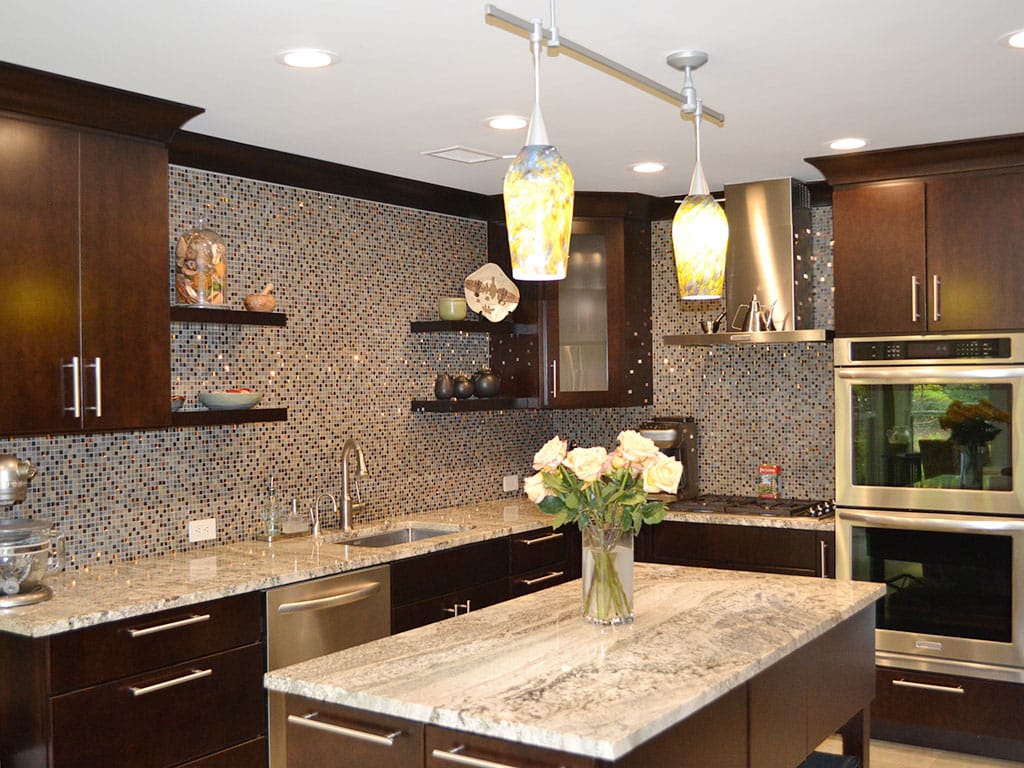While discussing remodeling details, you often hear about Quartz, Quartzite, or Granite to use as your new countertop, and you could find yourself wondering: is one better than the other?
And yes, everybody you ask gives you a different opinion. It can be very confusing and overwhelming, so let’s find out more about each of these materials.
The first big difference is that Quartz is an artificial material, while Quartzite and Granite are both natural stones.
In general, choosing Quartz is the right option when trying to find consistency in colors and patterns. The slabs are designed to have a specific look.
On the other hand, Quartzite and Granite offer a unique pattern and not very much consistency. Each individual slab of natural stone is unique in the world; its specks, crystals, and veins can’t ever be precisely the same because they are the result of the effect Earth had on their formation. Not only those pieces of stone are unique, but they also keep their value in time and can increase a house’s resale value. While there are multiple countertop material options to choose from, a significant number of homeowners still prefer to use natural stone in their homes.
QUARTZ

Appearance
Quartz is a man-made surface designed to mimic the look of natural stone without the “imperfections” they present in nature. In some cases, the beautiful character of a marble vein can be undesired in a specific project, where the goal is to control the amount of color and movement in our design.
Quartz is the perfect solution to this dilemma, as it is thought to look like precious stones, but it is designed to offer total color consistency and pattern control.
Depending on the manufacturing quality, Quartz can look like a non-descriptive countertop, or it can look like a marvelous piece of jewelry.
Composition
As we said before, Quartz is a human-made material. It is not a natural stone. It’s easy to get confused between Quartz, which is that artificially made material nowadays used in many remodeling projects, and quartz, which is the most abundant natural mineral found on the Earth’s surface. It is also easy to mix Quartz and Quartzite, which have a similar name but could not be so different in their provenience.
Quartz is mainly composed of a large percentage of ground quartz powders and a smaller percentage of polymer resins.
Durability and Maintenance
Quartz is mostly resistant to stains and scratches, and it is considered one of the most maintenance-free options for countertops. Being an engineered product, it is entirely non-porous; therefore, it does not need to be sealed at any time in its life. This characteristic makes it bacteria-free and helps to avoid cross-contaminations.
Most of the daily use in a bathroom or kitchen won’t damage the surface, but there is a slight chance to scratch or stain quartz in heavy-duty areas.
Due to the resins in its composition, Quartz is NOT heat-resistant. Hot pots and pans can heavily damage it.
QUARTZITE

Appearance
Quartzite is a natural stone, and it usually presents a unique pattern that adds a refined and elegant style to the areas where used. It offers beautiful veiny designs, and its layers have very compact crystals.
Composition
Quartzite is the result of the transformation of certain types of sandstones. These stones have a high level of natural quartz (mineral) in their composition and are exposed to incredibly high temperatures and high pressure.
Durability and Maintenance
Quartzite is probably the most durable of natural stones. It is really easy to clean; dish soap and warm water are usually the best option to keep the countertop in its best shape.
Do not use chemicals that are not specific for this use, nor anything harsh like vinegar or bleach. These products can penetrate the layer of sealer on the surface and ruin the stone underneath.
Depending on the type of sealer used during the original installation, the surface may need to be resealed every so often to keep it protected from daily wear and tear.
When sealed correctly, Quartzite will be moisture resistant.
If the surface shows imperfections on areas where water was left to air dry for an extended period of time, then it is a sign that the countertop needs to be sealed again.
Quartzite is considered a heat-resistant stone. However, it is always recommended to use trivets or hot pads under pots and pans to be safe. Many providers don’t warranty the stones in case of damages caused by heat.
GRANITE

Appearance
Granite is another type of natural stone that often has a more repetitive style in its pattern. Like any other natural stone, there aren’t two pieces precisely alike in the world; though, different granite portions may look so similar that it’s challenging to find the differences just by looking at them.
Composition
Granite is formed underground from large quantities of magma that has passed to the cooling stage. During this phase, minerals develop and bond into an agglomerate of different crystals to give Granite its final look.
We can find Granite in many different styles, and sometimes it can even have a similar look to other natural stones like marble.
Durability and Maintenance
Granite is a solid and durable material. As recommended for Quartzite, it is easy to clean by using soap and water.
For Granite also, do not use chemicals or harsh products. Anything like vinegar, lemon juice, baking soda, or similar will affect the integrity of the stone.
Like any other natural stone, Granite needs to be sealed at the moment of the original installation. Also in this case, a penetrating sealer may need to be applied again after a certain period of time.
Same as Quartzite, water can penetrate the surface in case the Granite is not sealed correctly.
Granite is often considered a heat-resistant stone, though it is recommended in this case as well to use hot pads. Your granite supplier may not include heat damages in their warranty coverage.
